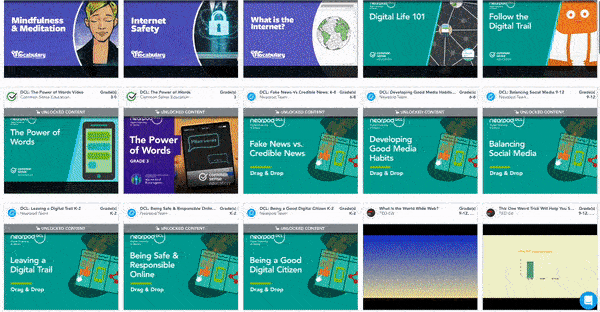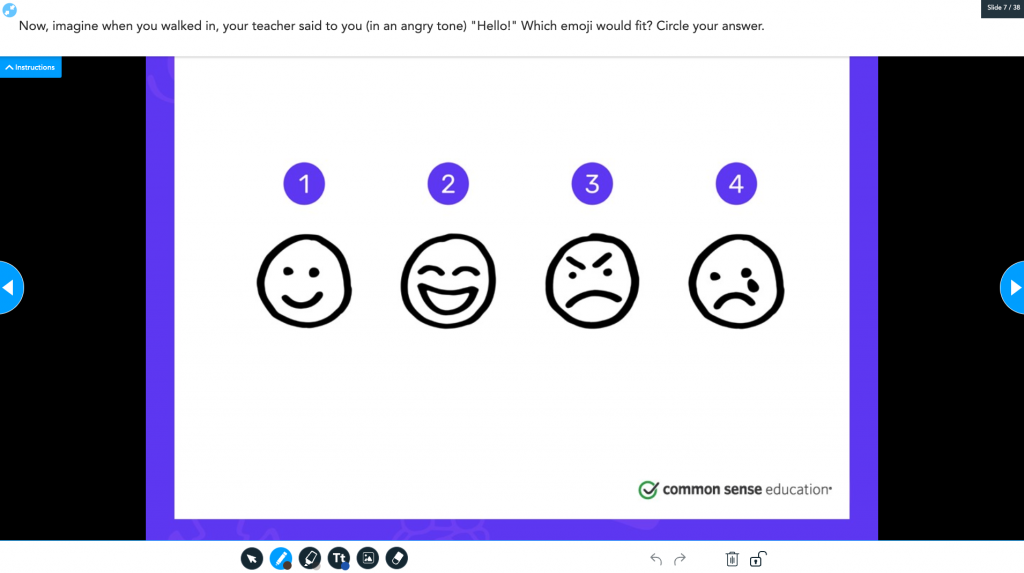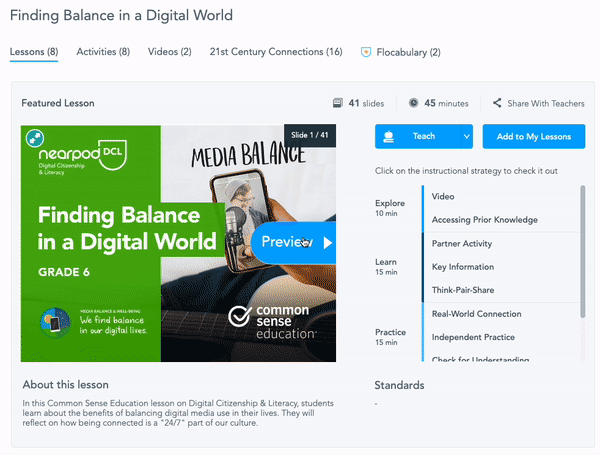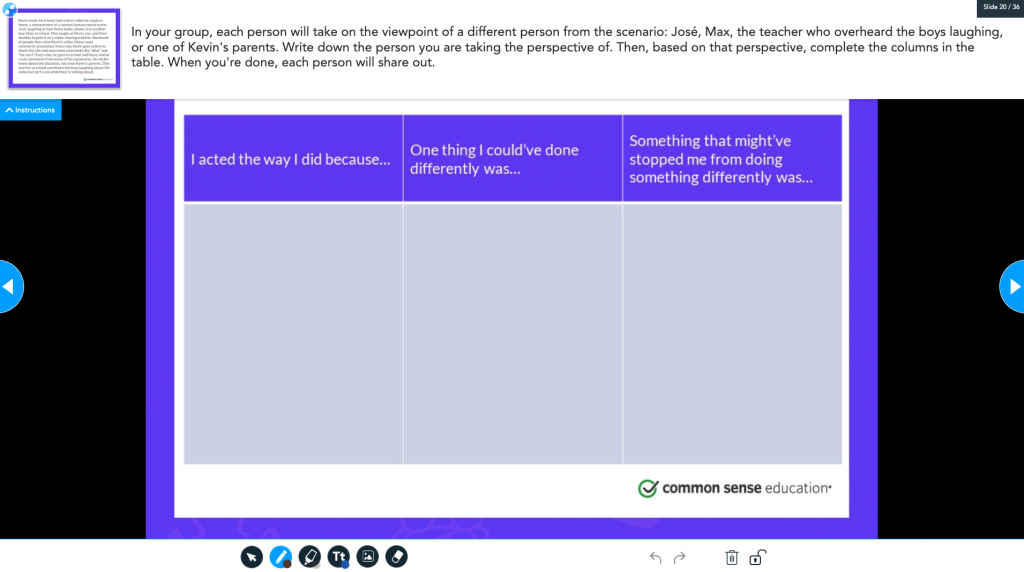
Digital Citizenship Week: Free lessons and activities for K-12
What is Digital Citizenship Week?
Every year, the third week of October is coined Digital Citizenship Week. Teachers use this time to teach about digital citizenship and support students in developing the skills they need to use devices safely, ethically, and effectively. It’s more important than ever to empower students to think critically and participate responsibly in the digital world, and that now includes understanding artificial intelligence (AI).
Celebrate Digital Citizenship Week with expert-led learning
Digital Citizenship Week is here, and we’re excited to support educators with this timely webinar from Nearpod and Common Sense Education on Thursday, October 9, 2025, at 4:00 PM EDT. Designed for teachers and school leaders, this session will provide practical strategies and free resources to help students navigate our AI-powered digital world responsibly. Whether you’re planning classroom activities or district-wide initiatives, you’ll discover ready-to-implement ideas that make Digital Citizenship Week impactful and extend learning throughout the year.
Digital Citizenship Week activities and lessons
Nearpod has curated free lessons for Digital Citizenship Week that you can use to teach about online safety, cyberbullying, digital literacy, and more. A key part of modern digital citizenship is AI literacy, understanding how AI works, its benefits, and its potential drawbacks. We compiled our most popular and recommended lessons to help you plan your Digital Citizenship Month or Week.
New to Nearpod? Make sure you’re signed up to access these digital citizenship activities and lessons! Teachers can sign up for free below to access and create interactive lessons. Administrators can schedule a call with an expert to unlock the full power of Nearpod for schools and districts.
The Nearpod Library and 21st Century Readiness Program include interactive digital citizenship activities, lessons, assessments, and videos covering topics like digital literacy, artificial intelligence (AI) education, cyberbullying, media balance, news, and media literacy, communication, digital footprint identity, and online privacy. These resources support educators in developing effective citizenship curriculum that covers essential skills students need to navigate the digital world responsibly. Check out our curated list of the most popular digital citizenship activities and staff favorite lessons from each library!
|
|
How Adirondack Central School District uses Nearpod for teaching digital literacy
Discover how the Adirondack Central School District, a rural public school district in upstate New York, embraced the challenge of aligning with New York State’s Computer Science and Digital Fluency Learning Standards. Leveraging Nearpod’s 21st Century Readiness Program, educators navigated these standards with purpose, empowering both teachers and students for a digitally fluent future.
Digital Citizenship lessons for Grades K-5
- Safe Online Behavior (Grades K-5) Most Used
- In this Nearpod Time to Climb, students demonstrate their understanding of safe online behavior and examples of digital citizenship.
- Digital Trails (Grade 2) Staff Favorite
- In this Common Sense Education lesson, students learn what their digital footprint is and how it is created.
- We the Digital Citizens(Grade 2) Most Used
- In this Common Sense Education lesson with digital citizenship activities, students learn how to be a good digital citizen.
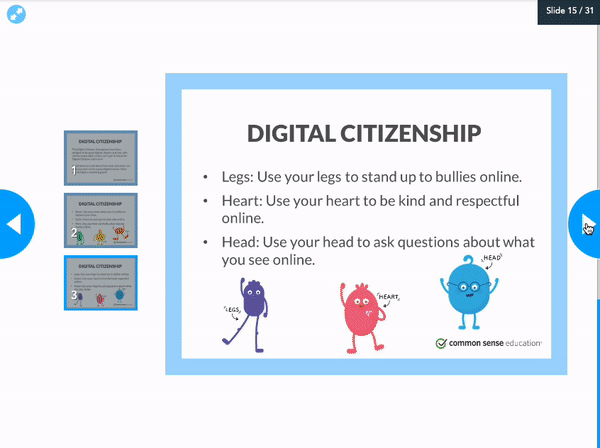
- Computer Vocabulary (Grades 3-5) Most Used
- In this Nearpod digital literacy lesson plan, students investigate how technology can be used to make their lives simpler, more productive, and more expansive.
- Rings of Responsibility (Grade 3) Most Used
- In this Common Sense Education lesson on Digital Citizenship & Literacy, students examine both their in-person and online responsibilities. They identify examples of their online responsibilities to others. This lesson has been unlocked to offer an inside look at Nearpod’s 21st Century Readiness Program.
- The Power of Words (Grade 3) Most Used
- In this Common Sense Education lesson, students decide what kinds of statements are OK to say online and which are not.
- My Media Choices (Grade 4) Most Used
- In this Common Sense Education lesson, students learn the “What? When? How Much?” framework for describing their media choices.
- Public and Private Spaces (Grade K-2) Most Used
- In this activity, students will learn the differences between public spaces and private spaces and will identify public and private spaces in their daily lives.
- Finding My Media Balance (Grade 5) Most Used
- In this Common Sense Education lesson, students reflect on how balanced they are in their daily lives and learn to manage their screen time effectively.
- What’s Cyberbullying? (Grade 5) Most Used
- In this Common Sense Education lesson, students learn how to recognize similarities and differences between in-person bullying, cyberbullying, and being mean.
Digital Citizenship activities for Grades 6-8
- Digital Citizenship & Responsibility (Grade 6-8) Staff Favorite
- In this 6-8 activity, students will review what it means to be a good digital citizen and how to take responsibility on social media with Nearpod’s interactive quiz game, Time to Climb.
- DCL: What is AI? (Grade 6-12) Staff Favorite
- Students get acquainted with how artificial intelligence works and consider some of its potential benefits and drawbacks. This lesson is unlocked to offer an inside look at Nearpod’s 21st Century Readiness Program.
- Don’t Feed the Phish (Grade 6) Most Used
- In this Common Sense Education lesson, students learn about how they can protect themselves from identity theft and safeguard their personal information.
- Finding Balance in a Digital World (Grade 6-8) Most Used
- In this Common Sense Education lesson, students learn about the benefits of balancing digital media use in their lives.
- Sourcing Your Information (Grades 6-8) Staff Favorite
- In this Nearpod digital literacy lesson, students identify strategies for determining who creates information online. Students learn about credibility, conflict of interest, and native advertising. This lesson has been unlocked to offer an inside look at Nearpod’s 21st Century Readiness Program.
- Etiquette & Collaboration on Digital Platforms (Grades 6-12) Staff Favorite
- In this lesson, students learn about digital platforms, digital collaboration tools, and digital etiquette. Students create, record, and publish a video conference presentation on a digital platform accessible to a global audience. This lesson has been unlocked to offer an inside look at Nearpod’s 21st Century Readiness Program.
- (Grade 6-12) Staff Favorite (Grade 6-12) Staff Favorite
- This Current Events lesson explores how social media impacts teenagers by having students examine usage statistics and reflect on their own relationship with these digital platforms.
- TikTok (Grade 6-12) Staff Favorite
- This Digital Citizenship lesson has students investigate TikTok’s platform and user base while examining how the app’s features can influence user behavior.
- How Retailers Stalk You Online (Grade 6-12) Staff Favorite
- In this Two Cents video, students learn about how retailers track their activity online to personalize ads and convince them to make purchases. They also receive some tips about how to be more mindful and deliberate with online shopping.
- Upstanders and Allies: Taking Action Against Cyberbullying (Grade 7) Most Used
- In this Common Sense Education lesson, students learn about cyberbullying and how they should respond to it. Students reflect on the importance of showing empathy before commenting online.
- The Power of Digital Footprints (Grade 7) Staff Favorite
- In this Common Sense Education lesson, students learn what a digital footprint is and what it conveys.
- Digital Media and Your Brain (Grade 8) Most Used
- In this Common Sense Education lesson, students learn how digital media is designed to hook users and what can be done about it.
- Social Media Behaviors and Cyberbullying (Grade 8) Most Used
- In this Classroom Complete Press lesson, students learn the importance of responsible use of online platforms and how to spot and stop cyberbullying.
Digital Citizenship lessons for Grades 9-12
- Challenging Confirmation Bias (Grades 9-12) Staff Favorite
- In this Common Sense Education lesson, that also includes digital citizenship activities, students learn to change their own confirmation bias to help them leverage technology and the internet safely, responsibly, and ethically.
- Digital Divide Actions (Grades 9-12) Staff Favorite
- In this Drag & Drop, students learn about the impact of computing technologies on equity and access in a global society while identifying actions as either reducing the digital divide or contributing to the digital divide.
- What’s in Your Digital Footprint? Video (Grades 9-12) Staff Favorite
- In this video from Common Sense Education, students learn about digital footprints and consider why they should think carefully before posting and sharing. To see the full lesson, check out “The Power of Digital Footprints” in our DCL library. This lesson has been unlocked to offer an inside look at Nearpod’s 21st Century Readiness Program.
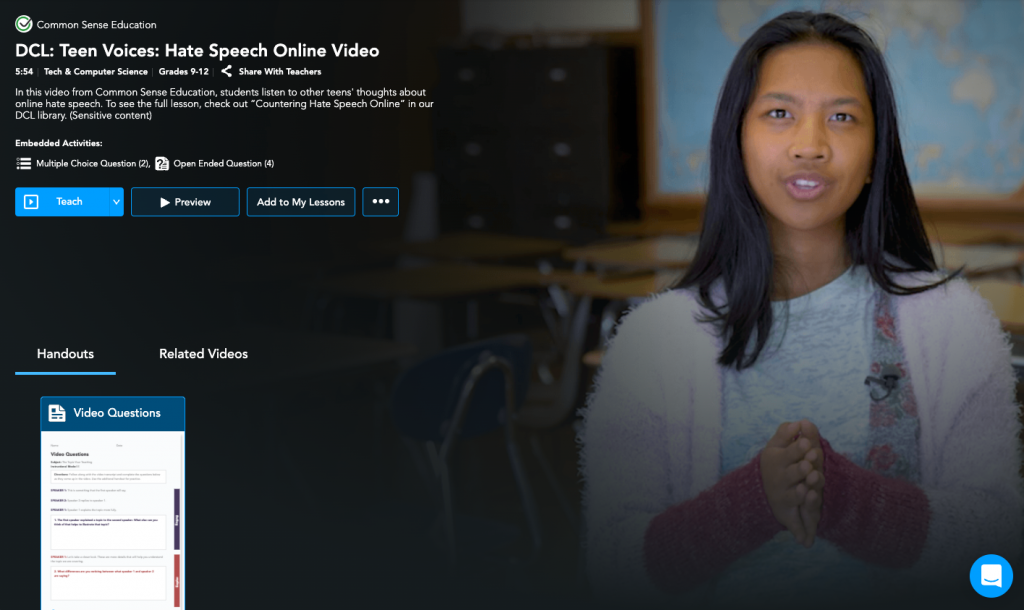
- Teen Voices: Who Are You on Social Media? (Grade 9-12) Staff Favorite
- In this interactive video from Common Sense Education, students listen to teens reflect on how they curate their social media lives.
- Who’s Looking at Your Digital Footprint? (Grade 11) Most Used
- In this Common Sense Education lesson, high school students learn how any information they post online can help or hurt their future opportunities.
What to do when the week is over:
Digital Citizenship is becoming a fundamental literacy that shouldn’t be confined to exploring for just one week. Continue the conversation about digital citizenship and AI literacy throughout the entire year. Nearpod’s Digital Citizenship and Literacy supplemental curriculum, available in the 21st Century Readiness Program, supports instruction in these critical areas. Teaching students how to stay safe, think critically, and act ethically online is key to their success.
New to Nearpod? Make sure you’re signed up to access these lessons and activities!
Teachers can sign up for free below to access and create interactive lessons. Administrators can schedule a call with an expert to unlock the full power of Nearpod for schools and districts.
Explore Nearpod’s free digital citizenship week activities and lessons here!

Nearpod’s award-winning platform is used by thousands of schools around the globe, transforming classroom engagement.
